Diseases and pests of pear
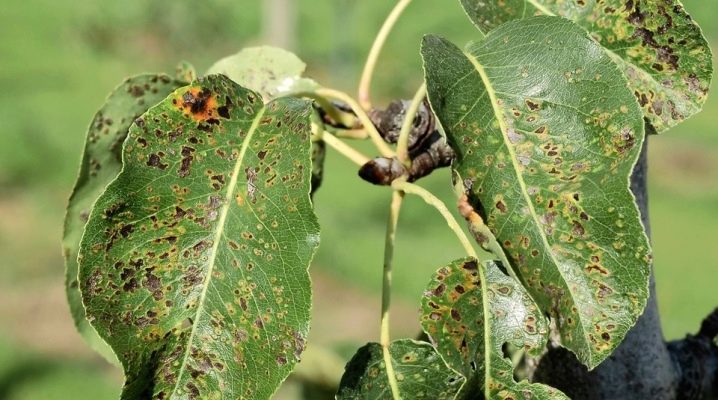
Like any other garden trees, a pear needs protection from various diseases and pests, because even the strongest plants can suffer from seasonal diseases or insect attacks.
Diseases and their treatment
When planting a pear on your site, you need to know in advance what diseases you should beware of. And you also need to always have on hand information on how to deal with the most common pear diseases.
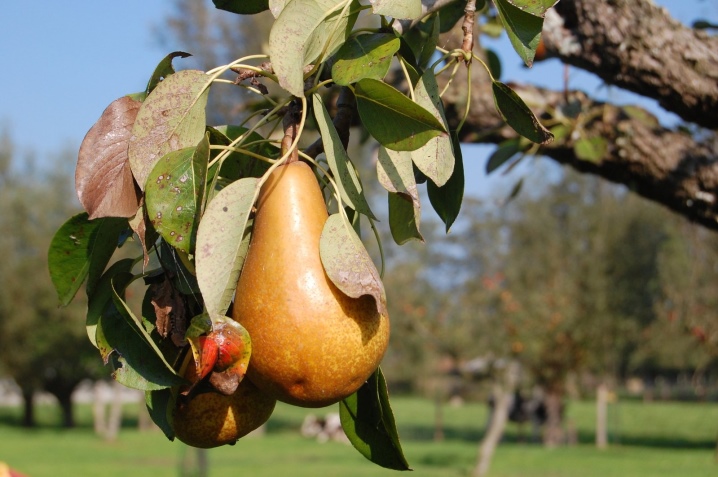
Scab
This disease affects both the bark of the tree and its foliage. You can notice the signs of the disease just on the leaves. They are covered with small black dots. Later, dark spots can be seen on the fruit. Those begin to rot, and their skins crack. Ripe pears growing on a scab-infested tree become unpalatable.
To treat the tree, gardeners usually use Bordeaux liquid. Plants are sprayed with it in spring. This is done three times: before the buds appear on the tree, during, and also after the end of flowering.
To prevent infection, the crown also needs to be thinned regularly. Branches and leaves are best burned. It is recommended to dig up the soil well before the onset of cold weather.
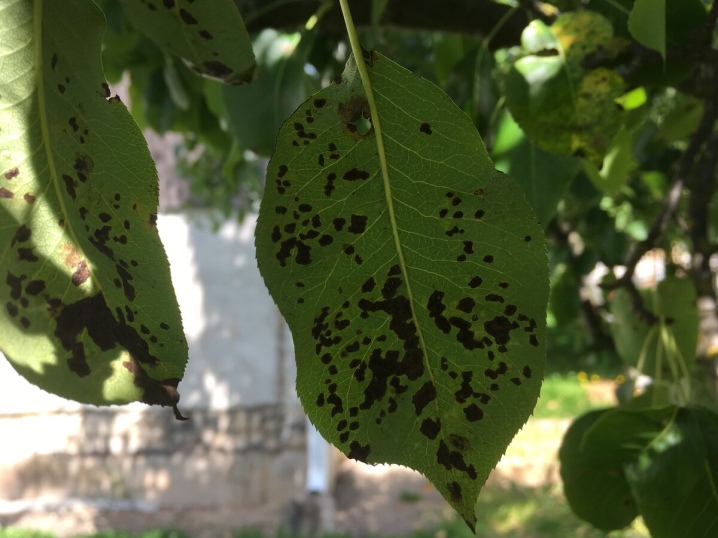
Fruit rot
This disease most often manifests itself in the summer. Symptoms of the disease usually appear on the fruits themselves, which begin to rot and fall to the ground. Treatments for pear trees are the same as in the previous case.
In spring and autumn, the tree must be treated with Bordeaux liquid for prevention. Leaves and branches of infected pears must be destroyed or taken out of the site.
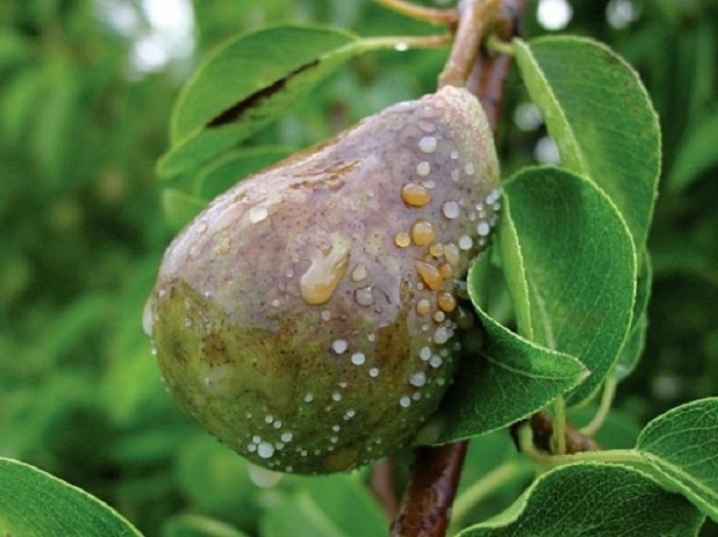
Sooty fungus
This disease affects both young seedlings and mature trees. At the infected tree, the foliage begins to turn black. After that, black spots appear on the fruits. If the pear is already weak, it may not survive the disease. Therefore, having noticed its signs, the tree must be immediately treated with Bordeaux liquid, as well as a light soapy solution.
Spraying should be done in warm weather. This is best done in the evening.
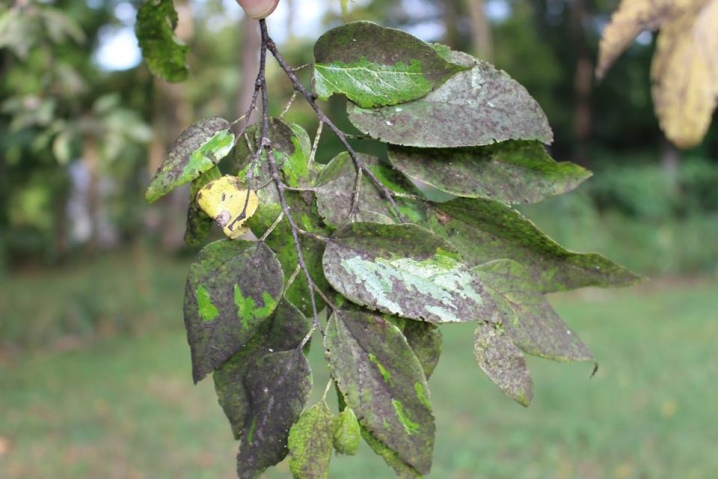
Powdery mildew
The main symptom of this pear disease is a dense white coating on green leaves. A couple of days after its appearance, the tree begins to dry out. Its leaves curl and fall off the branches. If the tree is not cured in time, it may die.
Most often, this disease manifests itself in the spring or early summer. The treatment of young pear seedlings must be approached responsibly. First you need to remove the infected shoots. After that, the plant must be treated with any fungicides. One of the most popular options is Fitolavin. After 12-14 days, the plant must be re-treated.

Rust
Infection of the tree with rust is indicated by bulky orange spots that appear on the branches and leaves. As a rule, pears get sick in the second half of April or early May. Having noticed the first signs of the disease, treatment should be started immediately. If the disease is started, the pear will stop bearing fruit.
Before starting treatment, the trunk must be cleaned of affected leaves and fruits. After that, the tree can be treated with a urea solution or infusion of marigolds mixed with ash.
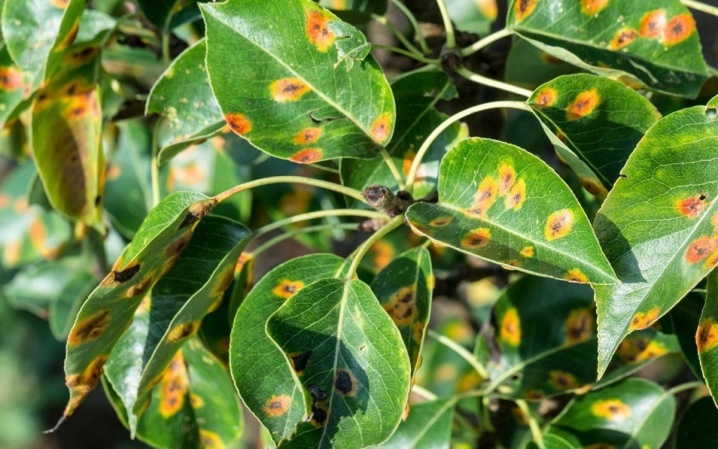
Antonov fire
This disease affects not only the bark of the garden pear, but also its branches. Cracks immediately appear on the tree, over time, they increase and become deeper. If you do not start treatment in time, brown spots will also begin to appear on the bark.This disease makes the plant very weak. Therefore, it becomes susceptible to other diseases. In a neglected garden, such trees may die. Pears must be treated very carefully for this disease.
It is worth remembering that this process takes quite a long time, so there is no need to rush. It is best to use a solution of copper sulfate and Bordeaux liquid to combat this disease. Trees should be sprayed with such products at intervals of several weeks.
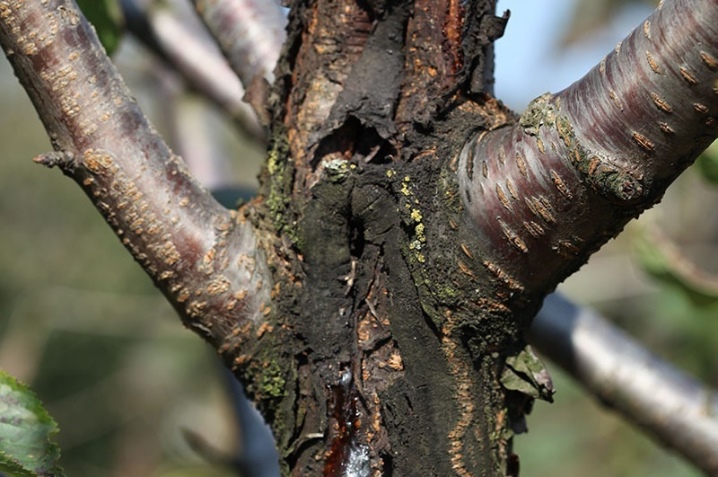
Bacterial burn
This is a dangerous disease that spreads very quickly. If you do not start to treat it in time, the whole garden will be in danger.
Having found signs of the disease, the plant must be cleaned of aching branches and leaves, and then treated with a solution of ferrous sulfate. Antibiotics can also be used for spraying. The main thing is not to exceed the dosage.
If the disease has affected most of the tree, the plant can only be uprooted and burned.

Brown spot
The description of this disease is familiar to most gardeners. It infects plants in late May or early June. Pear leaves are covered with ugly brown spots. Their number is increasing every day. Over time, the foliage begins to fall off.
To treat brown spot, all leaves must be torn off and destroyed. This must be done with gloves. After that, the pear must be sprayed with a good fungicide, as well as a solution of copper sulfate. This can be done only if there are no fruits on the tree yet.
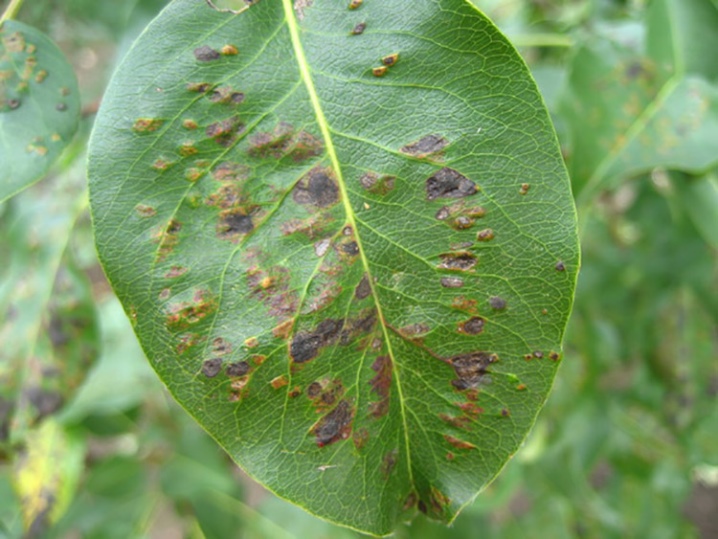
Mosaic on leaves
This disease most often affects young trees. Light green spots appear on the leaves, resembling mosaic pieces in their shape.
This is one of those diseases that cannot be cured. Over time, the disease begins to spread to other pears and other fruit trees. This happens very quickly. To prevent this, infected plants must be cut down and burned.
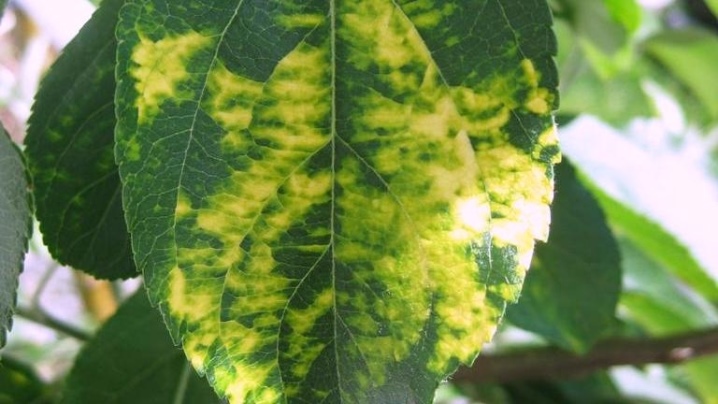
Cracks in the bark
Noticing that the fruits on the tree have become small, and its trunk is covered with deep cracks, the gardener should start to worry. Indeed, through them pests or fungal spores can penetrate into the tree.
Cracks in an adult plant must be carefully cleaned using a wire brush or a sharp knife. The remains of unnecessary bark must be destroyed. After cleaning the trunk, the tree must be treated with Bordeaux liquid mixed with any antifungal agent.
After finishing the work, deep cracks must be well covered with wet clay.
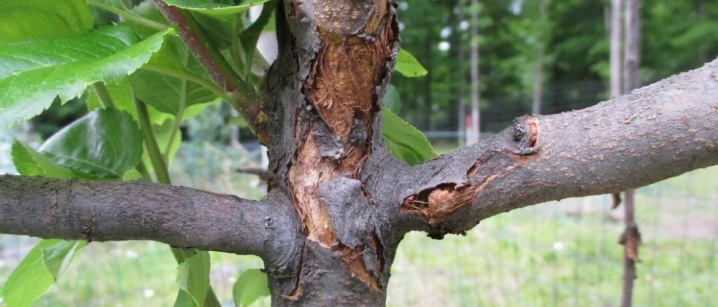
White spot
The surface of the leaves in the first days after infection is covered with white spots. Over time, the dots begin to change their color and turn brown. Usually, the tree gets sick in late spring, when the pear's immunity weakens.
To protect your pears from disease, they need to be treated with a mixture of copper sulfate and lime in early spring. After the trees bloom, the plants will need to be sprayed again.
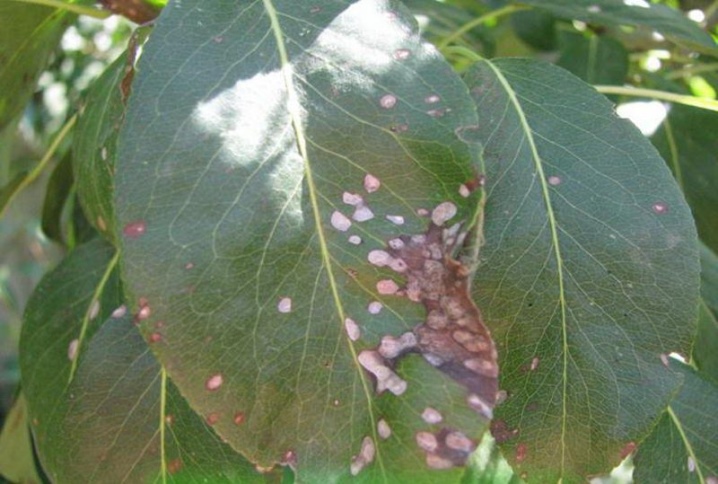
Bacteriosis
This disease affects both young seedlings and adult trees. Initially, large dark spots appear on the foliage. Over time, the leaves begin to curl. At this time, dark circles can be seen at the cut points.
Treatment of bacteriosis does not take much time. Affected branches are cut off. In this case, not only the diseased area is removed, but also 20-30 centimeters of the healthy one. The cut sites are carefully processed with copper sulfate.
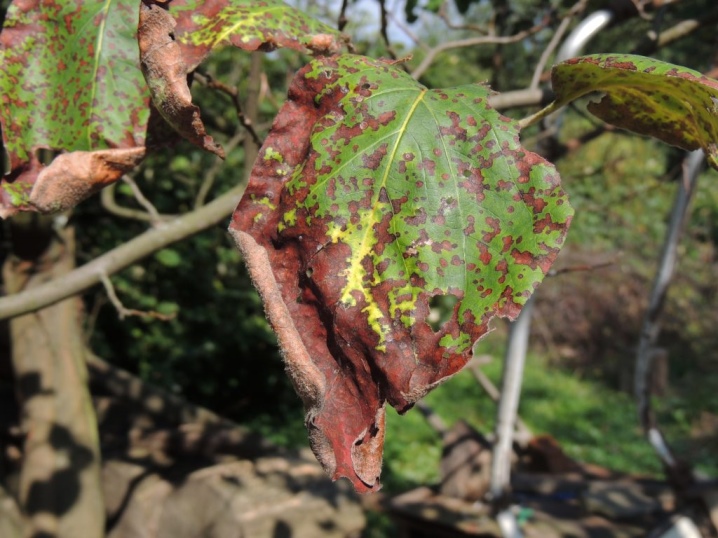
Moniliosis
This disease is also known as monilial burn. Its main symptoms are the appearance of brown spots on the leaves, as well as drying out of branches and fruits.
Ordinary Bordeaux liquid and copper sulfate can also be used to treat garden pears. Spraying is recommended 2-3 times per season.

Pests and the fight against them
Various pests that settle on pears can also destroy a healthy plant in a short time. Therefore, gardeners must be able to deal with them.
Multicolor
This large butterfly with large crimson wings is one of the pear's main enemies. On the site, you can see both adult insects and large dark blue caterpillars covered with yellow thorns. To combat these pests, ready-made chemicals are used.
You need to process the area before the number of tracks becomes too large. Having noticed the nests of pests, you also need to get rid of them.
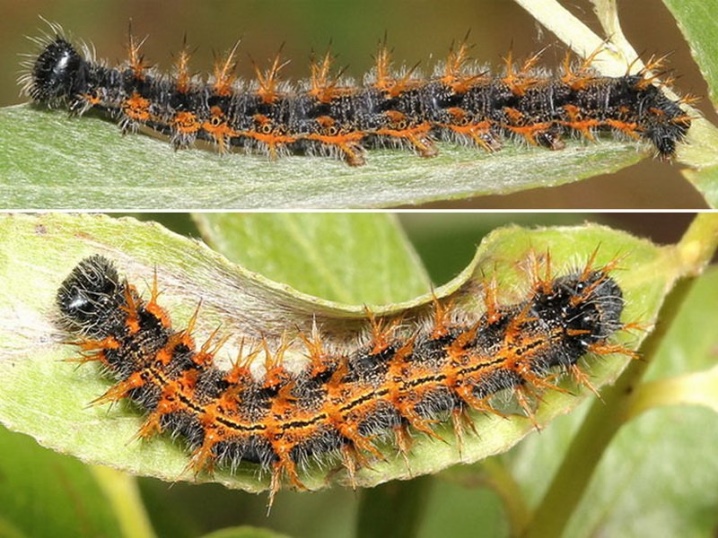
Tubevert
This pest is large in size. In length, it grows up to 10 mm. The insect is copper-red in color. Such bugs usually hibernate in the soil next to trees. Small insects appear on the site in the middle of summer.
It is best to deal with them mechanically. The bugs must be shaken off and destroyed. To prevent the appearance of pests, pears can be sprayed with a special preparation immediately after flowering. It is best to treat the area with "Fufanon" or "Karbofos".

Moth
Large dark gray butterflies can be seen on the site in the evening. The small larvae of these insects usually damage the fruit, depriving people of the harvest. Therefore, it is recommended to get rid of them as soon as possible.
Collect small pests manually. In addition, it is advisable to remove all fruits damaged by them from the site. To protect trees from moths, they are also sprayed with ready-made preparations.
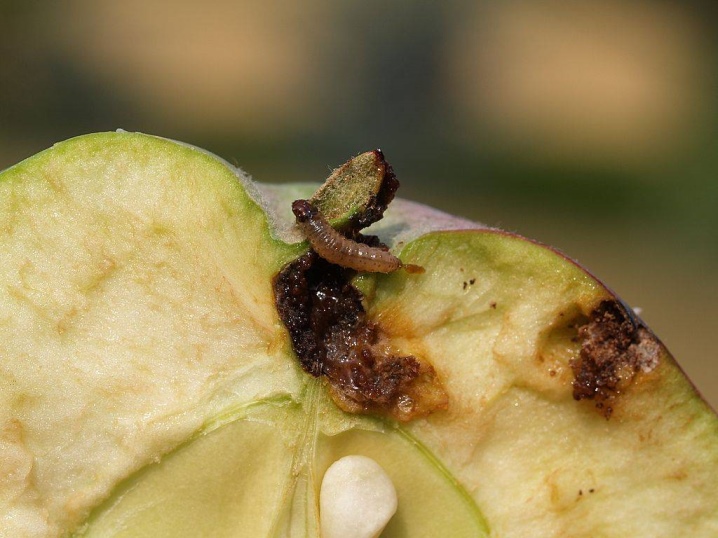
Aphid
Small aphids are one of the main enemies of most garden plants. To combat it, you can use both special drugs and improvised means. Most often, an ordinary soap solution or an infusion of marigolds is used for spraying.
To protect plants from aphids, you can also plant flowers next to pears that attract ladybirds. The latter are the main enemies of aphids. You can plant daisies, chamomile, lemon balm or poppy on the site. And also in the trunk circle you can plant parsley, sorrel, garlic or basil. These plants repel aphids, so they do not settle on garden trees next to them.
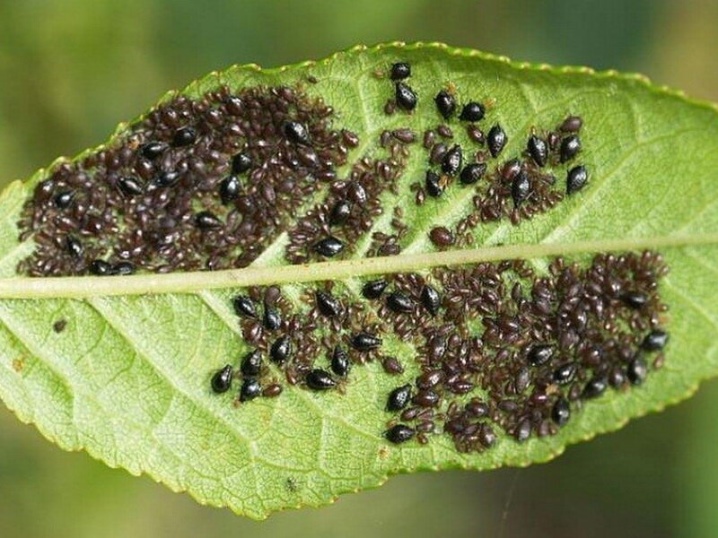
Medianitsa
This pest is dangerous for most varieties of trees. Its activity leads to the fact that the leaves become small and quickly fall off. This happens very quickly. Over time, the tree becomes weaker and begins to dry out.
There are several different ways to deal with copperhead. Spraying the plant with a kerosene-oil emulsion is considered the most effective method. In the spring, you can use Karbofos or other similar preparations to fight against the larvae of the honeydew.
Autumn preventive treatment is especially effective. The trees are sprayed with a solution immediately after harvesting. This procedure can significantly reduce the number of pests in the next year.
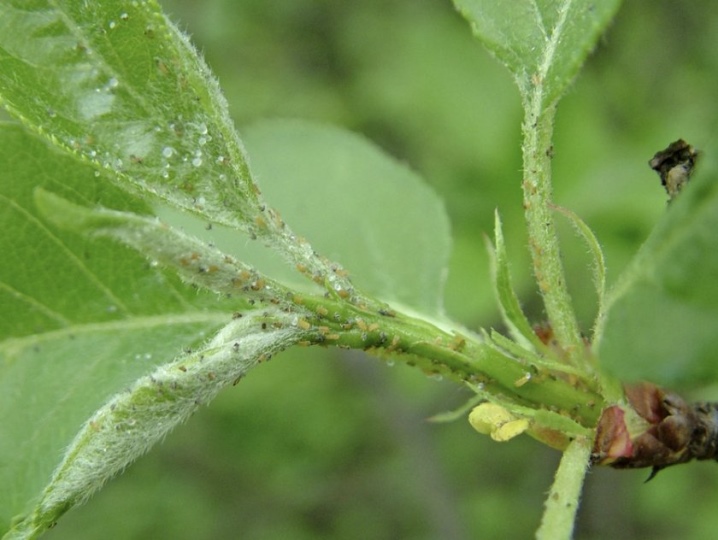
Gall mite
These pests are very small in size, so it is rather difficult to spot them. Usually, gardeners learn about their appearance after galls appear on the leaves - brown-red volumetric spots. Shortly thereafter, the foliage begins to dry out and fall off.
To protect trees from ticks, they are sprayed with "Fufanon" or colloidal sulfur in early spring. If necessary, this procedure is repeated in late spring and summer.
It is necessary to spray trees with any preparations, protecting hands, eyes and respiratory tract. In this case, the products will definitely not harm human health.
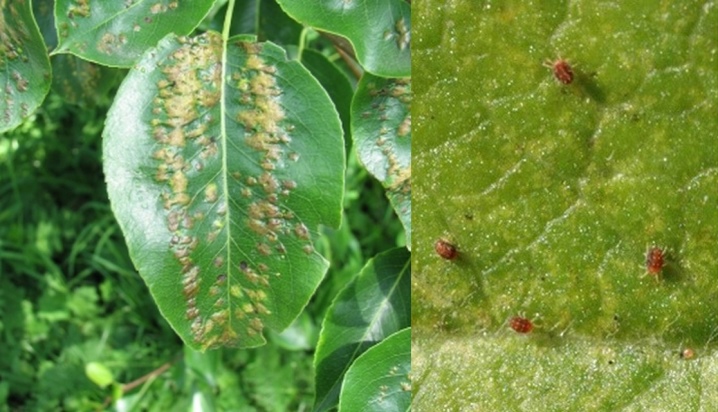
Prevention measures
To spend less time dealing with pests and diseases, gardeners recommend a series of simple preventative measures.
- When planting pears on their site, they should select the right neighbors. It is not recommended to place these fruit trees next to a juniper. These bushes contribute to the rapid spread of various fungal diseases.
- Water the trees carefully, trying not to touch the foliage. It is best to pour water directly under the root of the tree.
- In the fall and spring, garden pears need to be pruned regularly. Trees must be cleaned of all damaged and dried branches. You need to cut them off with a sharp pruner, knife or file. Cutting points must be treated with garden pitch. It is also recommended to remove all young growth growing near the trunk. Timely cleaning of the area can reduce the risk of pear infestation.
- If the trees were sick in the summer or were often attacked by pests, in the fall all the collected foliage and branches must be burned or taken out of the site. All garden tools must be disinfected after cleaning.
- After the end of all autumn procedures, the site must be dug up. In this case, no pests will remain in the soil.
- In spring, a lime solution should be used to protect the trunk. Such treatment saves the tree from small insects, as well as from the scorching sun rays. Gardeners recommend adding a small amount of copper sulfate to a solution with lime.
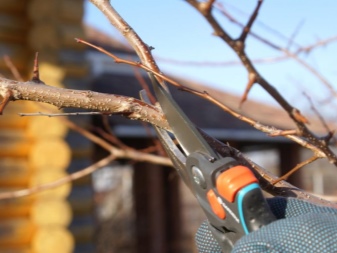
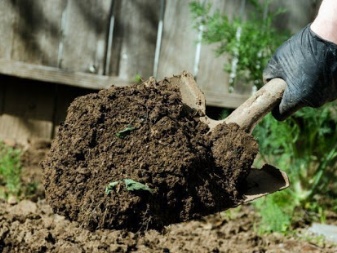
If you process the site in a timely manner and follow the simple advice of experienced gardeners, you can count on a good harvest.













The comment was sent successfully.